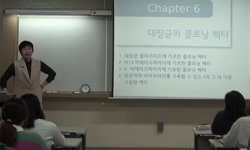전국 차나무 자생지에서 차나무를 수집하여 조성된 클론보존원의 630클론 중 생육이 왕성하고 내한성이 높은 차나무 31계통을 선발하였다. 선발된 31계통 중 최종적으로 3계통을 선발하여 2006...
http://chineseinput.net/에서 pinyin(병음)방식으로 중국어를 변환할 수 있습니다.
변환된 중국어를 복사하여 사용하시면 됩니다.
- 中文 을 입력하시려면 zhongwen을 입력하시고 space를누르시면됩니다.
- 北京 을 입력하시려면 beijing을 입력하시고 space를 누르시면 됩니다.
https://www.riss.kr/link?id=A100201022
- 저자
- 발행기관
- 학술지명
- 권호사항
-
발행연도
2009
-
작성언어
Korean
- 주제어
-
KDC
523
-
등재정보
KCI등재
-
자료형태
학술저널
- 발행기관 URL
-
수록면
660-663(4쪽)
-
KCI 피인용횟수
0
- 제공처
- 소장기관
-
0
상세조회 -
0
다운로드
부가정보
국문 초록 (Abstract)
전국 차나무 자생지에서 차나무를 수집하여 조성된 클론보존원의 630클론 중 생육이 왕성하고 내한성이 높은 차나무 31계통을 선발하였다. 선발된 31계통 중 최종적으로 3계통을 선발하여 2006년부터 2008년까지 전국 6개 지역에서 지역적응성 및 영양계 비교시험을 실시하였다. 그 결과 내한성이면서 다수성을 가진 영양계 차나무 "한광"을 최종 선발하였다. "한광"은 생육이 왕성하여 새싹수는 대비품종인 야부기다에 비하여 27.6% 많았고 백아중은 47.9
다국어 초록 (Multilingual Abstract)
The new Camellia sinensis L. variety, "Hankwang" was selected from 630 clones of the tea plant clone garden in Bioenergy Crop Research Center, National Institute of Crop Science (NICS), RDA. This variety was selected to develop superior variety for hi...
The new Camellia sinensis L. variety, "Hankwang" was selected from 630 clones of the tea plant clone garden in Bioenergy Crop Research Center, National Institute of Crop Science (NICS), RDA. This variety was selected to develop superior variety for high productivity and nutrient components from 2004-2008. We evaluated the clones by the characteristics of the leaf, nutrient components, and yield. "Hankwang" was finally selected from six regional trials from 2006-2008. The number of buds and weight of "Hankwang" were better than the control cultivar "Yabukata". "Hankwang" was observed to be more resistant to cold and disease compared to the control. The nutrient components of "Hankwang" such as tannin, catechin, total nitrogen, and caffeine were 16.7, 6.08, 2.32 and 2.00%, respectively.
참고문헌 (Reference)
1 Park, Y.G, "Study on the origin and the transmission of Japanese and Korean tea plant. I. The mophological and genetic variation" 7 : 143-161, 2001
2 Takeda,Y, "Studies on the diversity of the Japanese tea germplasm and its uses for breeding" 1 : 97-180, 2002
3 Rural Development Administration, "Standard of survey and analysis for agricultural science and technology" 428-436, 2003
4 Ikeda, N, "Morphological characteristics of tea germplasm introduced from Korea" 48 (48): 346-, 1998
5 Ikeda, N, "Morphological characteristics of Korean wild tea populations" 4 : 193-200, 2002
6 Ukers,W.H, "Moot question of tea’s origin" All about tea. The Tea and Coffee Trade Journal Company, New York 5-6, 1935
7 Park,I.H, "Ecology and morphological characteristics of leaves in natural populations of Camellia sinensis" 3 : 125-134, 1997
8 Han S. K, "Difference of biochemical contents in conserve Korean tea and introduced tea cultivars" 11 (11): 81-91, 2005
9 Park,Y.G, "Biography of tea plant. Genetic studies on Camellia sinensis var. sinensis of wild tea populations in Korea" 41-70, 2000
10 Rural Development Administration, "2008 Cooperation report for development of new cultivars" 2009
1 Park, Y.G, "Study on the origin and the transmission of Japanese and Korean tea plant. I. The mophological and genetic variation" 7 : 143-161, 2001
2 Takeda,Y, "Studies on the diversity of the Japanese tea germplasm and its uses for breeding" 1 : 97-180, 2002
3 Rural Development Administration, "Standard of survey and analysis for agricultural science and technology" 428-436, 2003
4 Ikeda, N, "Morphological characteristics of tea germplasm introduced from Korea" 48 (48): 346-, 1998
5 Ikeda, N, "Morphological characteristics of Korean wild tea populations" 4 : 193-200, 2002
6 Ukers,W.H, "Moot question of tea’s origin" All about tea. The Tea and Coffee Trade Journal Company, New York 5-6, 1935
7 Park,I.H, "Ecology and morphological characteristics of leaves in natural populations of Camellia sinensis" 3 : 125-134, 1997
8 Han S. K, "Difference of biochemical contents in conserve Korean tea and introduced tea cultivars" 11 (11): 81-91, 2005
9 Park,Y.G, "Biography of tea plant. Genetic studies on Camellia sinensis var. sinensis of wild tea populations in Korea" 41-70, 2000
10 Rural Development Administration, "2008 Cooperation report for development of new cultivars" 2009
동일학술지(권/호) 다른 논문
-
- 한국육종학회
- Jeong Ran Lee
- 2009
- KCI등재
-
- 한국육종학회
- Kwan Soo Woo
- 2009
- KCI등재
-
- 한국육종학회
- Jung Yoon Yi
- 2009
- KCI등재
-
Variation of Caffeic acid, Rosmarinic acid, Luteolin and Apigenin Contents in Perilla Germplasm
- 한국육종학회
- Myoung Hee Lee
- 2009
- KCI등재
분석정보
인용정보 인용지수 설명보기
학술지 이력
| 연월일 | 이력구분 | 이력상세 | 등재구분 |
|---|---|---|---|
| 2025 | 평가예정 | 재인증평가 신청대상 (재인증) | |
| 2022-01-01 | 평가 | 등재학술지 선정 (계속평가) |  |
| 2021-12-01 | 평가 | 등재후보로 하락 (재인증) |  |
| 2018-01-01 | 평가 | 등재학술지 유지 (등재유지) |  |
| 2015-01-01 | 평가 | 등재학술지 선정 (계속평가) |  |
| 2014-01-01 | 평가 | 등재후보학술지 유지 (계속평가) |  |
| 2013-01-01 | 평가 | 등재후보 1차 PASS (등재후보1차) |  |
| 2011-01-01 | 평가 | 등재 1차 FAIL (등재유지) |  |
| 2009-01-01 | 평가 | 등재학술지 유지 (등재유지) |  |
| 2008-04-07 | 학술지명변경 | 외국어명 : KOREAN JOURNAL OF BREEDING -> KOREAN JOURNAL OF BREEDING SCIENCE |  |
| 2007-01-01 | 평가 | 등재 1차 FAIL (등재유지) |  |
| 2005-01-01 | 평가 | 등재학술지 유지 (등재유지) |  |
| 2002-01-01 | 평가 | 등재학술지 선정 (등재후보2차) |  |
| 1999-07-01 | 평가 | 등재후보학술지 선정 (신규평가) |  |
학술지 인용정보
| 기준연도 | WOS-KCI 통합IF(2년) | KCIF(2년) | KCIF(3년) |
|---|---|---|---|
| 2016 | 0.6 | 0.6 | 0.49 |
| KCIF(4년) | KCIF(5년) | 중심성지수(3년) | 즉시성지수 |
| 0.45 | 0.41 | 0.952 | 0.07 |




 ScienceON
ScienceON 스콜라
스콜라







